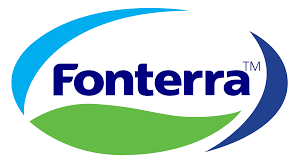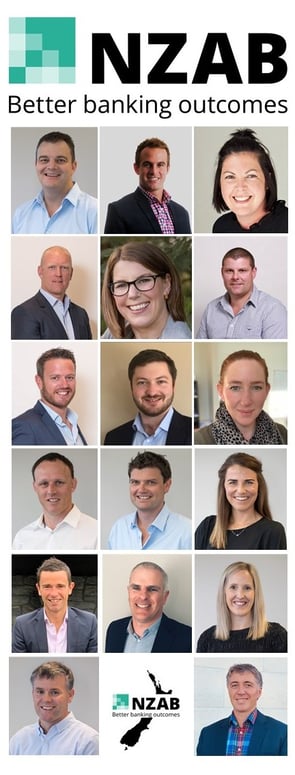

Within that update, I’ve picked out four distinct points in their long-term plans:
- “…Our strategy requires us to focus our capital and people on enhancing New Zealand milk…”
- “…Through planned divestments and improved earnings, an intended return of about $1 billion to shareholders by FY24, and around $2 billion of additional capital available for a mix of investment in further growth and return to shareholders…”
- “…A Group Return on Capital of 9-10%, up from 6.6% in 2021..”
- “…help ensure we don’t lose the benefits of what generations of farmers have built…”
To continue to set the scene, consider this:
- In 2000, there were c. 70,000 farm owning farmers (all farm types) in New Zealand, today there are currently c. 50,000.
- Within that dairy farming herd numbers dropped from 13,861 herds down to 11,179 herds. Given there are more multiple herd owning farmers today than back then, the actual number of dairy farmers is likely to be even less.
- In 2000, an average herd size was 236 cows on 93 eff ha, producing 70,761 kgms in total. In 2020, it is 440 cows on 155 eff ha and 169,595 kgms
- The average price for a farm in 2000 was $20.30/kgms. With stock and plant, this meant an average farm was c. $1.7m in total capital value. Fast forward to 2020 and its $37/kgms for land and buildings and with stock and plant this means an average farm is now worth $7.3m
- At best, you might get 60% of that from a bank, meaning that if you’re a would-be standalone farm owner, back in 2000, you needed $680,000 of your own equity of cash for the average farm. Now you’re going to need almost $3,000,000.
- The traditional pathway to farm ownership options are dropping. Sharemilker numbers have dropped substantially. New equity partnerships are not being formed at the same rate. Leasing towards ownership is long since gone.
- The average age of farmers has been steadily increasing, sits much higher than other business sectors and is showing no sign of flattening.
- New Zealand farmers are going to be some of the first in the world to have GHG costs passed onto them, plus they have ongoing challenges with the social impacts of nutrient discharge. We currently have low levels of technology to deal with this, low R&D funding and sourcing angel capital for Agri-tech start up firms is difficult.
- Reserve bank capital regulations are currently set up to dis-incentivise Agri lending in favour of simpler house lending. Over the last 5 years, Home loan debt capital increased almost $90bn. In the same time, Agri debt increased only $3bn.

So, the question begs itself: where are all our future farmers and Agri-tech start-ups going to come from if the jump is so large to get into it?
Whilst the public worries en-masse about getting into a new house with some an unwieldy deposit requirement- farming has its own, much larger challenge.
Today, using Fonterra’s billions as an example, we start a series of articles about how the next generation might get into farming and farm related businesses.
The wonderful thing about dairy farming right now is that cash yields are about 6% on average payout metrics.
That’s a remarkably high number when the cost of funding is around 3-4%. In short, it means that you could effectively borrow 100% of the farm and still make a profit. Now of course you can’t do that (unless you have other assets) as a bank simply won’t lend you that much.
You’re going to have to come up with a significant amount of your own equity to get there - $3m in fact. If you’re a contract milker earning $150k profit per year, that’s 20 years. Now, that’s an “average” example and there’s plenty of other ways to get into farming earlier than that (and we’ll cover them off in some upcoming articles), but it nevertheless highlights the plight of the diminishing nature of the farm owning community
Equally the opportunity in Agritech could not be more immense.

Whilst it is difficult that New Zealand has to be a first mover with solving the impact of GHG’s, it also means we will lead the world with our solutions.
If done right, those solutions will be incredibly valuable to the firms that create them – creating revenue and enterprise value as we export those solutions to the world.
Becoming the “Israel” of the Agri sector is in front of us.
There are many highly rewarding non-farm owning roles in New Zealand farming businesses, but to make real progress we need to see more and more of the next generation getting into Farm and Agri-tech business ownership.
After all, it’s each new generation that provides fresh thinking, new energy and innovation that keeps an industry going. The best and the brightest typically only stick around in an industry where they can see a pathway for their own wealth creation.
Even if you didn’t believe that, having the next set of farm owners able to buy your farm will ensure you always have an exit plan. If there is a diminishing pool of potential farm owners with both skill and capital availability, how are you going to on-sell your farm one day?
So back to Fonterra and to its desire to keep New Zealand’s milk pool, invest into further growth and gain a return of 9-10% on capital invested.
Here are just some of the ways that Fonterra could help:
- Invest directly beside a new farmer. Maybe a young farmer has 20% of the required asset base and needs 40%. Why can’t Fonterra stake a stake alongside that to make up the difference (i.e Young Farmer 20%, Fonterra 20%, bank 60%)?
- Provide a “quasi equity” arrangement which sits behind the bank with young farmer purchasers. This might have a really low running cost (fixed dividend or interest rate) but share in some (but not all) of the upside of the farm performance over time – or even link to payout to manage volatility.
- Set up an Agritech fund that co-invests alongside firms that are building solutions to NZ’s looming issues with GHG and other environmental impacts – Be the seed capital that could get taken out (or kept) as these firms grow and eventually list.
- Build an Agri Bank or an Agri Finance Company, or simply just a debt fund: Obviously set up is not small thing, but combining with an existing player with low or no Agri Exposure could make this quicker. This would provide a lot more competition (and hence capital) to the market and increase availability of options and cost effectiveness.
- Plus, we would love to hear your other ideas!
One billion dollars goes a long way in something like this. On that average farm, if Fonterra was looking to provide 20% of the capital, that would be $1.5m per farm – that’s nearly 700 new farm owners coming into the sector.
Or in the Agri Tech sector - that would go even further.
Of course, all these options should have some pretty tight hoops to pass through.
They should be only offered to the better farmers or business operators who have great operating and financial history.
Every year there could be a new intake.
They’re going to have to prove their stripes first so they will need to have shown they’re grown some equity.
And this funding could be turned over and used time and time again – the objective should be on getting that funding out once the business is able to. And of course, they’re going to have to supply Fonterra or be allied to the farming industry with their Agri tech – and what a great way that would to retain milk supply into the future.
And most of all, what a great way to have hundreds of new, young, talented individuals enter the sector each year given the opportunity burns so brightly.
At NZAB, we deal with farmers right through from older exiting farmers to the next generation making their first play and everything in between.
We know first-hand how difficult it is to access capital in Agri as we help farmers get better results from their bank every day
We know how the current banking regulations are not stacked in favour of getting access to Agri debt capital, nor are there many mechanisms for accessing capital in farming that aren’t just bank debt.
However, we think that it doesn’t have to stay that way – this sector is too important to NZ’s future prosperity.
We would love to hear your view.

Who is NZAB?
Farming’s very complex and you can’t be an expert in everything. That’s why the best farmers gather a specialist team around them. Our specialty is better banking outcomes for our clients.
There’s no one better to work alongside you and your bank. With a deep understanding of your operation and our considerable banking expertise, we can give you the confidence and control to do what you do best.
We’ve been operating for four years now and we’re right across New Zealand.
For an introductory no cost chat, pick up the phone and talk directly to one of our specialists on 0800 NZAB 12.
Or if you prefer, Visit us at our website or email us directly on info@nzab.co.nz

